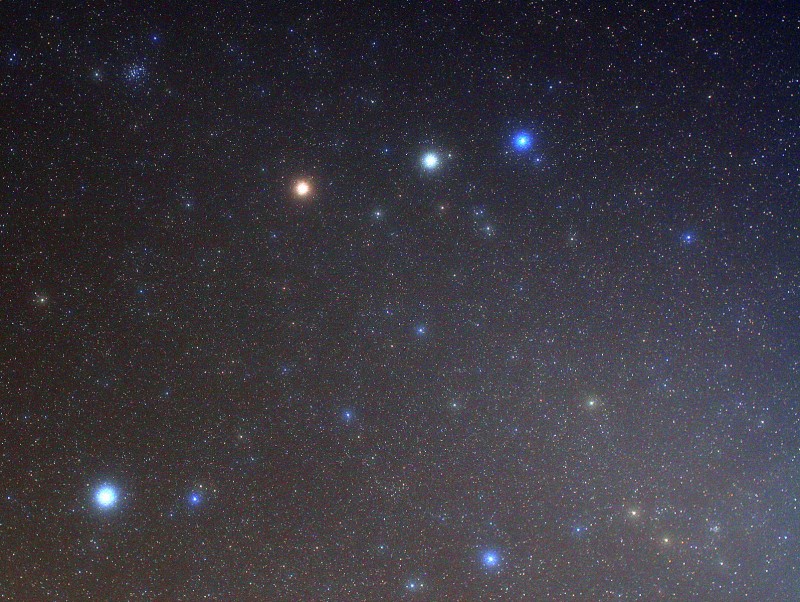Credit & Copyright: Doug Zubenel
(TWAN)
Explanation:
Wandering through
the evening sky,
on May 4th planet Mars
stood in line with Castor and Pollux,
the two bright stars of the constellation
Gemini.
In this time exposure of the celestial alignment,
Mars actually takes on a distinct yellowish
hue, contrasting in color with
Pollux;
a giant star known to have a
Jupiter-class planet,
and
Castor;
itself a multiple star system.
Though in
mythology
Pollux and Castor are twin brothers,
the two stars are physically unrelated and are about 34 and 50
light-years distant respectively.
Included in the skyview are
Procyon,
alpha star of Canis Minor, and
famous star cluster M44 also known as the
Beehive Cluster.
Dust in our own solar system reflecting sunlight
creates the faint band of
Zodiacal light emerging from the
lower right corner of the frame.
Just put your cursor over the picture for help
with identifications.
Of course, bright Mars can still
be
found in the western
evening skies and tonight wanders
near the crescent Moon.
digg_url = 'http://apod.nasa.gov/apod/ap080510.html'; digg_skin = 'compact';
1999 2000 2001 2002 2003 2004 2005 2006 2007 2008 2009 2010 2011 2012 2013 2014 2015 2016 2017 2018 2019 2020 2021 2022 2023 2024 2025 |
Yanvar' Fevral' Mart Aprel' Mai Iyun' Iyul' Avgust Sentyabr' Oktyabr' Noyabr' Dekabr' |
NASA Web Site Statements, Warnings, and Disclaimers
NASA Official: Jay Norris. Specific rights apply.
A service of: LHEA at NASA / GSFC
& Michigan Tech. U.
|
Publikacii s klyuchevymi slovami:
Mars - Mars - stars - zvezdy
Publikacii so slovami: Mars - Mars - stars - zvezdy | |
Sm. takzhe:
Vse publikacii na tu zhe temu >> | |
